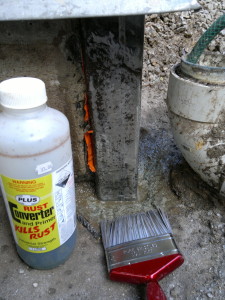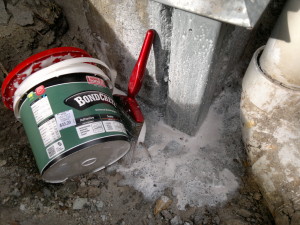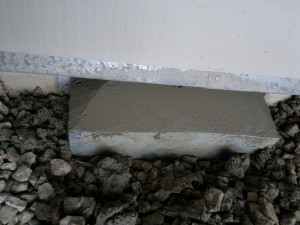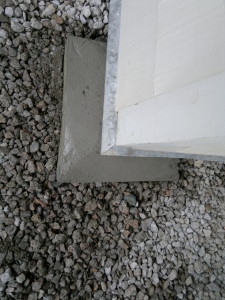UNEMPLOYED? Why won’t small operators take you on, when they need more staff?
This blog won’t help you, I’m afraid, but it may explain why it’s so hard to get a job.
HERE’S THE SITUATION:
THERE’S NOT MUCH IN THE WAY OF PRIVATE ENTEPRENEURIAL INDUSTRY IN AUSTRALIA; business is not encouraged by government, unless it’s extraction of our resources by foreign companies for sale overseas. We even have to pay exorbitant prices for stuff dug out of our own ground.
All credit to local manufacturers and businesses for employing staff: it’s a nightmare of bureaucracy. But out there in self-employed land there are thousands of workers desperate for extra pairs of hands. They can not give jobs, nor can they employ even an offsider.
WHY IS THIS SO?
A SELF-EMPLOYED PERSON WOULD NEED A SECRETARY AND A SOLICITOR TO COPE WITH THE THE ADDED LOAD OF RESPONSIBILITY, BOTH LEGAL AND PRACTICAL, to cope with the paperwork required to legitimately hire an offsider.
Every obstacle is put in the way of taking on an employee, and employers are at huge risk of retribution should the slightest mistake occur either regarding the bureaucratic or workplace-safety aspects of employment. SO NO WOULD-BE EMPLOYER IS GAME TO MAKE THE EFFORT, if he or she is self-employed and needs help. What a terrible situation, and it is country-wide.
THE INVALUABLE KNOWLEDGE AND SKILL ATTAINED BY THE EMPLOYEE, AND THE WAGES EARNED WHILST IN EMPLOYMENT, ARE THE LEAST-RECOGNISED BENEFITS.
The only satisfactory way of avoiding the nightmare of responsibility, litigation, fines and loss of licence-to-operate is to ensure that anyone helping in your business is also self-employed, self-insured, with an ABN etc., and totally self-sufficient in every way, paying their own tax, driving their own vehicle, in fact another self-employed person to whom work is parceled out to, and who is paid as a contractor.
WHEN A YOUNG BLOKE OR WOMAN TURNS UP AT YOUR CURRENT WORKPLACE, ASKING IF THERE’S JOB, WHAT DO YOU TELL THEM? The fact that they have got off their arse and fronted up is usually sufficient qualification; you know they are keen, and will learn, and will work, and you know that they may become a regular employee and help with your workload, and perhaps add a little to your income, for that is the idea of employing others. Well, knowing the stress and extra work put on yourself, plus the huge responsibility, and the fact that, far from being a help and income-booster, your new employee will be an extra weight on your shoulders and consume much of your productive time, you say ‘NO’ right away. No job. No work here. Sorry. Good luck. Even though you know he or she would be very useful and worthwhile to further the project you are working on. Either you say ‘NO’, and get the depressing meeting over quickly, or you say, ‘Look, yes, you could help here; go out, get yourself an ABN, get yourself personal insurance, income protection, third party liability insurance, do a course and get certified in workplace health and safety, et cetera et cetera, get your own tools, transport, frighten the poor kid away, who has no idea what you’re talking about, and who says, ‘I just want a job’.
If the would-be employee bites the bullet, does the research, and assembles all the paraphernalia necessary to become a bona-fide self-employed person, the responsibility of absolutely no-one as far as litigation is concerned, then he or she can find work, but note, NOT employment, but as a contractor. This happy situation is enjoyed by thousands of Australians, but is in jeopardy if the glare of the spoilers becomes focused, for in no way can it be accepted by the administration of government.
If the proliferation of regulations regarding employer-employee relations was entirely the burden of the regulators, not the employers, the way would be open for vast numbers of unemployed to find work. The boss would find the work, the pay and the training; the regulators would handle all the paperwork, the responsibility and of course, the cost. The employee would liase entirely with the regulatory bureaucracy. The boss has the vital, all-important job, which no government department can do: the boss supplies the work and the the pay and the experience.
How many one- and two-man businesses are there in Australia that used to offer work, both full- and part-time to anyone who seemed acceptable? These businesses now have no employees, because the excessive load in time and responsibility makes being an employer unviable. Work is available, pay is available, learning experience is available, but small operators will not hire staff. Legislation, litigation, bureaucracy, workplace-health-and-safety, insurance, sick pay, holidays and holiday-loading, apprenticeship schemes, portable long-service leave, all these are an impossible burden to the small operator, and the situation is even worse if the employee is Aboriginal, when much of the associated paperwork is followed by serious threats to the employer for non-compliance. Before this mass of restrictions became endemic, before workplace health and safety was invented by the government departments, along with every other legislation churned out by officious public ‘servants’, an Australian bloke could take on a young fellow and teach him a trade, and look after him, and warn him of the dangers of the job, and instill a sense of self-preservation: one hand for the ship, one hand for yourself, as the seamen of sail were taught. Of course there is danger in almost any job. Legislating for safety makes mindless idiots of un-taught workers, who now behave as if their own survival is someone else’s problem, and an opportunity to claim huge sums for injury; and it happens. One or two accidents occurring in a workforce, though tragic, can destroy the employers in question, because no matter what the facts are, the employer takes the blame and retribution. The fact is that it is impossible to avoid accidents, no matter what regime of safety is in place: that is why they are called ‘accidents’. The entire convoluted chain of responsibility is simply in order to have someone to blame, and consequently sue, and is in part a construction of the litigation industry. If a worker steps off the scaffold into space, someone must take the blame.
SO, THOUGH THERE IS NO DOUBT THAT AN ENVIRONMENT OF RIGOROUSLY-APPLIED SAFETY MEASURES HAS REDUCED ACCIDENTS, THESE MEASURES HAVE REDUCED EMPLOYMENT BY THE SAME PERCENTAGE: FEWER EMPLOYED, FEWER ACCIDENTS.
The days of freedom have gone. Trades and skills have disappeared due to the impossibility of taking on apprentices. The situation forces skilled men and women into self-employment, their knowledge evaporating into retirement.
INSTEAD OF GOVERNMENT BUREAUCRACY LOADING EMPLOYERS WITH ENDLESSLY-EXPANDING REGULATIONS, THIS VAST ENGINE OF OFFICE-WORK COULD ITSELF TAKE ON THE RESPONSIBILITY IT CURRENTLY LOADS ONTO BUSINESS. A DEPARTMENT DEVOTED ENTIRELY TO PUTTING INTO EFFECT ITS OWN REGULATIONS, AND ALLOWING BUSINESS, OR PERHAPS SPECIFICALLY SMALL BUSINESS, TO GET ON WITH THE JOB OF CREATING WORK AND EMPLOYING WORKERS.
Individual workers would have have all their bureaucratic requirements taken care of by the very departments that demand these requirements.
Since writing this (from the perspective of the building trade) I have had a similar reaction from others working in entirely different fields; printing, dairying, for example. Small businesses throughout Australia are struggling along, making ends meet, earning enough to get by without employing help. Instead of growing incomes and expanding industries, these small operations are disappearing as their owners retire. Why is this so? Not because their work is unviable; given free rein these one- and two-man operations could expand and develop in the market, their principals freed to explore new possibilities, thus engendering further employment and local sales.
In this stultifying environment, the entepreneurial instinct is nipped in the bud. The promising green shoots of future industries are crushed by the weight of bureaucratic interference and demands. Everyone knows and complains. Everyone has known and has complained for generations since the early days of industry. The dark, satanic mills are gone (except in China) but the regulators press on, their own industry of repression now bent on regulating all enterprise out of existence.
There are government programs devoted to getting young people work. Businesses are constantly offered incentives to take on staff, but for the small operator no incentive is sufficient to overcome the burden demanded by regulation. The most effective incentive to small business is relief from regulation. The nanny requirements block the road to employment. A great idea requiring staff is up against a blockade of legislation, supposedly designed to protect the employee, but in fact rendering employment impossible without limitless resources. A small family business could take on staff and expand, if it could afford also to hire unproductive accountants and secretaries to cope with the extraneous requirements of over-government.
The problem is that the regulations concerning staff employment in a vast mining operation are also applied to a one-man business. Obviously the small business can not cope. Obviously. The mine will close, the staff will lose their jobs. The one-man business, of necessity, will run for a lifetime. A lifetime of training and wages is being lost, ten thousand times over, to the unemployed of Australia.








